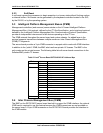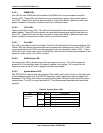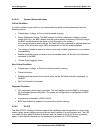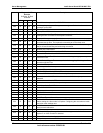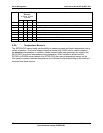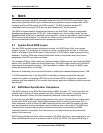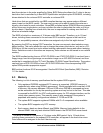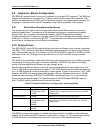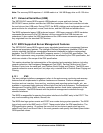
Intel® Server Board SE7501WV2 TPS BIOS
Revision 1.0
Intel reference number C25653-001
71
6. BIOS
This section describes the BIOS-embedded software for the SE7501WV2 server board. This
section also describes BIOS support utilities that are required for system configuration (ROM
resident) and flash ROM update (not ROM resident). The BIOS contains standard PC-
compatible basic input/output (I/O) services and standard Intel
®
server features.
The BIOS is implemented as firmware that resides in the flash ROM. Support for applicable
baseboard peripheral devices (SCSI, NIC, video adapters, etc.) that are also loaded into the
baseboard flash ROM are not specified in this document. Hooks are provided to support adding
BIOS code for these adapters. The binaries for these must be obtained from the peripheral
device manufacturers and loaded into the appropriate locations.
6.1 System Flash ROM Layout
The flash ROM contains system initialization routines, the BIOS Setup Utility, and runtime
support routines. The exact layout is subject to change, as determined by Intel. A 16 KB user
block is available for user ROM code or custom logos. A 96 KB area is used to store the string
database. The flash ROM also contains initialization code in compressed form for on-board
peripherals, like SCSI and video controllers.
The complete ROM is visible, starting at physical address 4 GB minus the size of the flash ROM
device. Only the BIOS needs to know the exact map. The BIOS image contains all of the BIOS
components at appropriate locations. The Flash Memory Update utility loads the BIOS image
minus the recovery block to the flash.
Because of shadowing, none of the flash blocks is visible at the aliased addresses below 1 MB.
A 16 KB parameter block in the flash ROM is dedicated to storing configuration data that
controls the system configuration (ESCD) and the on-board SCSI configuration. Application
software must use standard APIs to access these areas; application software cannot access the
data directly.
6.2 BIOS Boot Specification Compliance
The BIOS conforms to the BIOS Boot Specification (BBS), Revision 1.01, which describes the
method used to identify all initial program load (IPL) devices in the system, prioritizes them in
the order selected in Setup, and then sequentially attempts to boot from each device.
If more than one non-BBS compliant device exists in the system, the boot device is determined
by the option ROM scan order. Option ROMs residing lower in memory are scanned first. In
some instances, control of which non-BBS compliant device from which the system is booted
may be achieved by moving the adapter cards to different slots in the system. The BIOS may
include special code and may be able to selectively boot from one of several non-BBS
compliant devices in the system. Such techniques do not always work and are outside the
scope of this document.
BIOS Setup provides boot order options including: CD-ROM, hard drive, removable device, and
other bootable devices such as a network card or a SCSI CD-ROM. The system BIOS tries to



